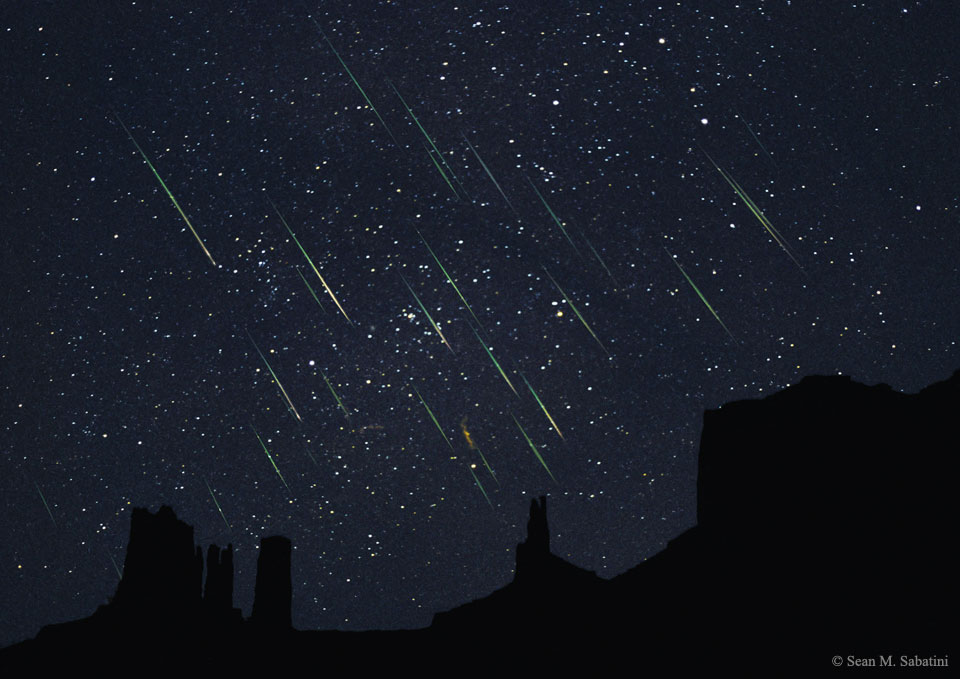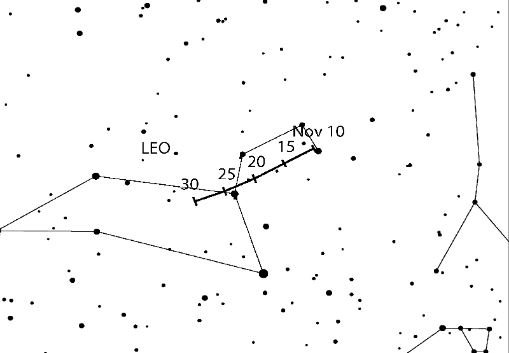Leonid meteor shower is famous for potentially being the source of huge meteor storms, as it last occured in 1999, 2001 and 2002. 20 years after the 1998 disappointing event over Asia, and dramatic fireball display over Europe, Leonids won’t be the source of a dramatic display this year, but a few activity outbursts may occur and should be carefully monitored.

Next meteor storms are expected to occur in 2033-34, so Leonids are now a quite quiet meteor shower, with usual ZHR (Zenithal Hourly Rates) ranging between 10-20, which is a medium activity level, far from the storms it can produce on exceptional occasions. As the meteor shower is the one which allowed some more and more accurate meteor outbursts predictions, mainly due to the 1998 “fiasco”, 55P/Tempel-Tuttle dust trails are quite well understood and modelled.
In 2018, apart from the “classical” maximum, expected when our planet will pass close to the nodal point of 55P/Tempel-Tuttle orbit (on Nov 17, around 22h30 UT), the Earth should cross a few old dust trails: several low activity outbursts may be observed, but their activity levels is quite difficult to estimate. Here are the Leonids activity outbursts that may occur:
- 604 dust trail: 19/11, 17h16 UT (Jérémie Vaubaillon)
- 1069 dust trail: 15/11, 22h20 UT (Mikiya Sato), or 19/11, 23h59 UT (Jérémie Vaubaillon)
- 1102 dust trail: 21/11, 00h54 UT (Jérémie Vaubaillon)
- 1268 dust trail: 18/11, 23h27 UT (Jérémie Vaubaillon)
- 1433 dust trail: 20/11, 07h04 UT (Mikiya Sato)
- 1466 dust trail: 20/11, 09h30 UT (Mikhail Maslov)
- 1567 dust trail: 25/11, 23h24 UT (Jérémie Vaubaillon)
This year, the First Quarter of Moon will set in the second part of the night, leaving a few hours of observations under dark skies for Northern hemisphere astronomers. Leonids meteor shower radiant is located within the head of Leo constellation, and rise above the horizon around local midnight: meteors are best observed at the end of the night.

With an atmospheric entry velocity of 71 km/s, Leonids are some of the fastest meteors of the year: expect to see very fast streak of light when you observe some of them far from horizon and radiant. They will appear as medium-apparent velocity meteors if they are lower in the sky or close to the constellation of Leo.
Good luck and clear skies to all!




 You saw something bright and fast? Like a huge shooting star? Report it: it may be a fireball.
You saw something bright and fast? Like a huge shooting star? Report it: it may be a fireball.  You counted meteors last night? Share your results with us!
You counted meteors last night? Share your results with us!  You took a photo of a meteor or fireball? You have a screenshot of your cam? Share it with us!
You took a photo of a meteor or fireball? You have a screenshot of your cam? Share it with us!  You caught a meteor or fireball on video? Share your video with us!
You caught a meteor or fireball on video? Share your video with us!